| ILFORD Chronology INTRODUCTION |
|
|
|
Quoting from the Website
of HARMAN technology Limited, trading as ILFORD PHOTO: "Since that time, ILFORD PHOTO has ..... led the worldwide resurgence of black-and-white photography." The current ILFORD Photo factory is situated at Town Lane, Mobberley, Knutsford, Cheshire, WA16 7JL, England. An aerial view of the ILFORD Photo factory, taken during the summer of 2023 by Thomas Nugent and posted onto the Geograph.org website, can be viewed here. ILFORD photo occupies part of the old Rajar factory site at Mobberley which became the sole film and paper manufacturing premises for Ilford (then Ilford Anitec) in 1996. The Mobberley site has been the home of a photographic company since around 1901, originally under the name of the Brooks-Watson Daylight Camera Company Ltd who had their main premises in Great Homer Street, Liverpool. They seemingly wished to move into the production of light sensitive materials and viewed the cleaner air of rural Cheshire as a better home for such an activity than Liverpool. In 1907, Brooks Watson formed a subsidiary company which they called Rajar (1907) Ltd and around that time the name on the front of the Mobberley factory building was changed from Brooks Watson to Rajar. Members of the Mobberley Village Society have contributed various images and information regarding the early times of Rajar Ltd and the Mobberley site. The factory is believed to have been acquired by Ilford, Limited, in 1928. The original Rajar factory buildings, which retained the Rajar name long after Ilford acquired the premises, were mostly demolished in 2004 and the land sold to Barratt Homes for the construction of around 90 houses, some of which were occupied by March 2007. Ilford retained its newer buildings at the rear of the site and they are still in use (2016). The imposing 1903 entrance building to the Rajar factory has been retained and now serves as a village community facility. This building was preserved, renovated & presented to Mobberley as part of an agreement with Ilford in exchange for the Parish Council supporting Ilford's planning application for housing on the site Tony Usher's website shows some views of the original Ilford buildings at Mobberley and the site's demolition phase. Tony worked for Ilford for 40 years, the last 18 years before retiring being in "Quality Services", the largest of Ilford's quality control facilities. This facility tested film and paper for Production and R&D departments using a huge range of equipment and techniques. Tony was the Technical Manager of QS and he ensured that all the data generated during testing was consistently accurate. His website is well worth a look - scroll down to see the old buildings. The original Rajar Ltd stone plaque can be seen. The preservation of this plaque was also part of the deal with Ilford. Barratts were appraised of the situation at a meeting when they bought the site and Ken Trotman, with Councillor Frank Williamson, ensured the stone was removed to a safe location. Barratts were then badgered to ensure the stone was re-placed. To move straight to my chronology
listing, click here. |
|||
| Introduction: | |||
|
Mr Alfred Hugh Harmann (born 1841) lived and had a photographic studio at 2 Ewell Road in Surbiton, Surrey, from 1867-1879. Four of his children were born there, adding to the three born at Peckham where he first set up business as a photographer. While at Surbiton he suddenly left his wife and family, went off with another lady and started manufacturing photographic plates from a house in Ilford. (Ref: AP magazine 29th Sept 1990, from reader Sam Welford, FRPS). Thus, the photographic company
that was to become Ilford Ltd, started in 1879 in Ilford, Essex,
north east London, UK. Alfred Harman set up a business in
the basement of his house, 'Elmhurst', on the corner of Cranbrook
Road and Park Avenue. The house was demolished in the 1930s
to make way for a cinema which was never built; after the second
world war the Cranbrook
pub was built on the plot. In April 2013 the plot was occupied
by a building called the London
Dartbar and by October 2014 this same building was named
'The Cranbrook Banqueting Suite' a possible wedding reception
venue. Wikipedia says: A different version, but thoroughly well researched (with copious references) of Alfred Harman's earliest times is related by Nicholas Middleton, who says "Most histories of Ilford Limited describe the company moving to Roden Street (a site now occupied by Sainsbury's supermarket) after its beginnings on Cranbrook Road. Although the company's address was 29-37 Roden Street by the time it closed, this is misleading: Alfred Harman initially rented a cottage on the Clyde Estate, followed soon after by the purchase of houses in nearby Grove Terrace (later Uphall Rd), which were converted into a plate coating department and warehouses. As the business expanded, the Britannia Works Company quickly acquired the parcel of land bounded on two sides by Clyde Cottages and Grove Terrace and built a factory (1883). A wood engraving of the Britannia Works Company factory was used in an advertisement for Ilford Plates in 1888. It shows the factory bounded by a private road on the north-western side: this runs parallel to Back Street, called Roding Street on the OS map of 1896, and then Roden Street by 1919. By the 1970s, Ilford's administrative address was 29-37 Roden Street, Ilford IG1 2AB; Tel. 01 478 3000; Telegrams PLATESILFORD. The lower Left Hand corner of this map shows Roden St, and what is presumably the Sainsbury's Super Store. The Park Avenue intersection with Cranbrook Road can be seen towards the upper Left Hand corner of the same map. The Ilford Recorder
newspaper, on Thursday Feruary 28th 2002, published a two page
article looking briefly at the history and chronology of Ilford
Ltd. The British Journal of Photography
did an historical account of Ilford Ltd at the time of Ilford's
Centenary in 1979. The summary reads: |
|||
Trade-Mark Images: |
|||
| In 1886 Alfred
Harman introduced his 'paddle-steamer' trade mark. This
continued in use (slightly modified) for almost 60years. My thanks to Doug McKee for noting detail differences in these images - also thanks to the authors of the book 'Silver by the Ton' (see below). |
|||
|
Richard W Holzman has traced the original formal application for registration of this paddle steamer trade mark as it appeared in the 'Trade Mark's Journal'. The application is dated 6th October 1897. This date conflicts with the date reported above (1886), though its quite possible the paddle steamer drawing was in use on Alfred Harman's products for some years before he applied for his drawing to become his expanding company's formal trade mark. The application was reported in 'The Photographic Dealer' magazine for January 1898. To see the full page image from that magazine, click here. Alongside is the specific text, extracted and enhanced by Richard. |
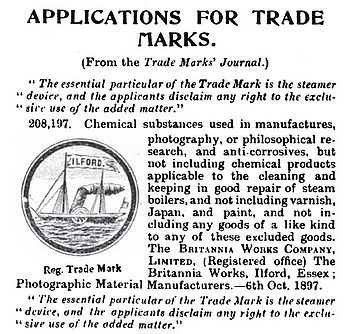 |
||
 Original version, 1886. Similar to that in the application, above. |
The name 'Ilford'
appears in the 1886 version of Harman's trade mark, even though
his company name was still (then) Britannia Works Company. The
explanation appears on p19 of 'Silver by the Ton'. "By 1883, only four years after its foundation, the business had expanded so well that a special factory was built on the Clyde Estate for plate manufacture. Two years later, Harman quarrelled with Marion and Co. and terminated their agreement. In 1886, he tried to obtain an injunction to prevent their using the name 'Britannia'. Harman lost his case: Mr Justice Chitty ruled that, as Marion and Co. had registered the mark, they were entitled to use it. Harman reacted to the decision by changing the name of his plates from 'Britannia' to 'Ilford' and the name Britannia Works to the Britannia Works Company. He also introduced the paddle steamer trademark and reduced his prices. For example, the price of one dozen Ordinary quarter-plates (3¼in x 4¼in) was reduced from 2s to 1s". |
 1901- an unusual version. It seemingly pre-dates the requirement for Britannia Works to specify their new name as ILFORD, Limited. |
|
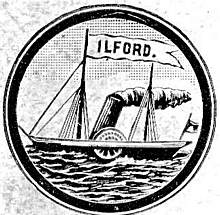 From 1907 BJPA But why does the flag not read ILFORD, Limited ? |
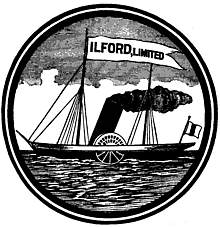 1908 |
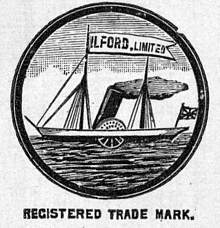 From 1911 BJPA |
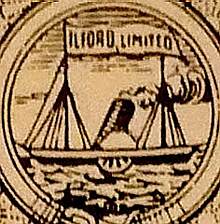 1913 |
|
|
|||
 1925-1945 By circa 1925, Ilford, Limited had reverted to just using the name ILFORD. |
|
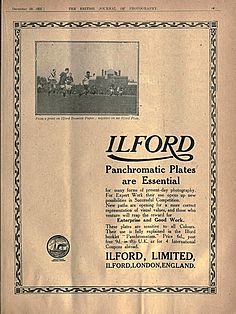 |
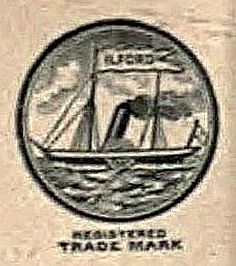 End Dec 1922 |
 |
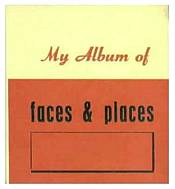 |
Ilford incorporated this slogan into their camera design. The Ilford Envoy box camera, in the mid-1950s, had its focusing marked: 'Push-In for Places ~ Pull-Out for Faces'. |
recalls a seemingly earlier slogan: "Focus right then gently press: ILFORD Selo spells success". |
|
|
"In sun or shadow everyday, get more good snaps the SELO way". |
||
 |
has been sent by James Kay (April 2021) who says: "This has been in my family for three generations." Working out its age isn't easy, but factors to consider are: so it would have been 1922 (earliest) before supply justified producing these sort of signs. (see the Canadian advert above). Since the sign makes no mention of Selo, it seems it cannot have been produced post-1931. but that ornate font suggests much earlier. |
||
| Carl Garner has sent the following six images of three Selo film dispensers. All are in full working, dispensing, order. | |||||
|
It is the tallest of the three at 94cm height, a depth of 10cm and is 16.5cm wide, it holds 20 x120 films. |
This is the widest at 20cm, but shortest at just 80cm tall and is 12cm deep, it holds a total of 32 x 120 films. |
This is the deepest at 19cm. It is 86cm tall and 18cm wide. It also holds the most films; 13 per chamber, 39 total. This one also has a more decorative top, not being flat like the other two. Found in an old storage room at a Southend chemists. |
|||
 |
 |
 |
 |
 |
 |
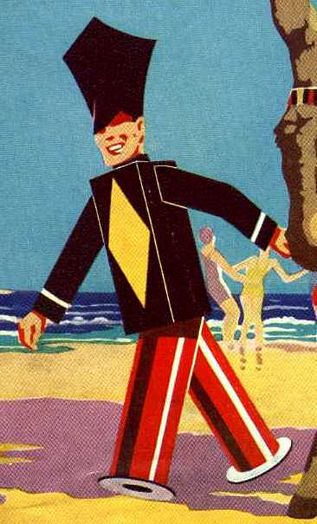 Selo Soldier from front cover of The Ilford Courier, June 1934. For more Selo Soldiers see this webpage. |
 |
Dates from a time when size 20 ie 120 film, cost 1/- per roll, probably early 1930s. |
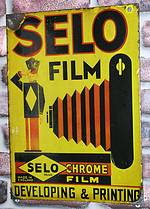  The 'Selo Soldier', images used by Ilford during the 1930s to promote 'Selo' brand films. The left hand one is on display at Bradford Media museum. |
||
|
The vending machine below was seen at the 3-Counties Show Ground 'Flea Fair' at Malvern on Sunday 15th September 2019. It was manufactured by National Automatic Machines Ltd. who were a leading maker of small chewing gum, match, cigarette and chocolate etc. vending machines. Their factory was at 99, Cobbold Road, London NW10. The company also had an address at Progress House, Kingston Road, London, SW20. Unlike the wall mounted 120 size roll film DISPENSERS above (film price 1/- =12d old pence =5p new pence), the machine shown below was seemingly intended to receIve EXPOSED films for subsequent developing and printing (not in the machine, of course). The coin entry slots state that the user must pay by inserting a half crown coin (=2s/6d =30d =12.5p) plus two sixpenny pieces (=2 x 6d =12d =5p). So the total to be inserted was 3s/6d (= 42d = 17.5p). If this price covered all the developing and printing costs, then it seems low, even if the customer only reeceived small 'contact' sized prints. To make any sense of this price it was thought the machine dated to the late 1940s, maybe up to 1950. But this simple explanation
of a machine designed to receive exposed films and later provide
to the owner his negatives and finished prints, raises questions
of operating logistics, principally: |
||
.jpg) |
.jpg) |
Gavin Ritchie, who has his own collection of film vending machines, has suggested that perhaps this machine was originally based upon one for vending 4 different film sizes e.g: 120, 620, 127 and 116. The price of 3s/6d was intended to cover the price of the most expensive, with coin change attached to each less costly film. This might date the machine to the mid-1950s. The small round holes near the bottom letter box sized opening may have acted as 'peep' holes to enable the machine owner (or a user) to speedily check whether films were still available within the machine. Alternatively, perhaps they originally held the mechanism by which the film purchaser selected the size of film he wanted. The lack of a 4th such hole (left hand side) suggests this machine was specified as only to be for vending three film sizes. The 4th film internal vending 'channel' was omitted and in its place was constructed an exposed film depository. The machine would have been located on the outside wall of a photographic dealers (most likely a chemist shop) and would have enabled 3 sizes of fresh film to be purchased and, somewhat unusually, exposed films to be left for developing and printing, even when the shop was closed. The owner of the exposed film would have collected his prints from the shop a few days later and would have paid for them across the counter, at a price that took account of the number of negatives on his film and the number of failures not printed. Gavin has suggested that the film vending facilities of the original design may have been blanked off when the price of films rose such that 3s/6d no longer covered their cost, but the shop owner wanted to continue to offer a facility to receive exposed film when his shop was closed. While this sounds a credible explanation, it doesn't explain why the coin entry slots were not then similarly blanked, as they would no longer serve a purpose, apart from confusing the customer. |
.jpg) |
||
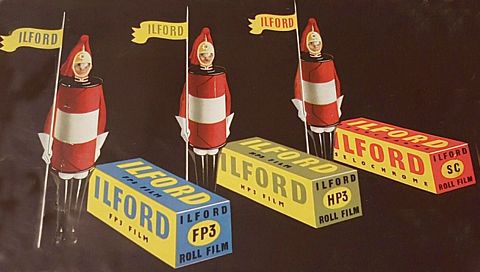 |
An Ilford 'Selo Soldiers' film advert probably dating from around 1953. See another copy here. |
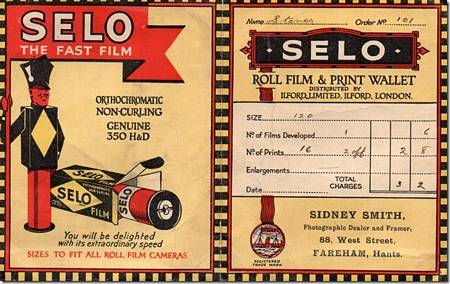 |
Alongside, and below, are scans of various Ilford print wallets (envelopes), provided to customers from chemists shops after the shop (or its agent) had developed and printed the customer's roll film (spool). The print wallet to the left appears to be the earliest shown here. It has come from Colin Frankland, and perhaps dates from the early 1930's. Notice how each print cost a mere 2d (an old penny = not quite 1p) as the order seems to be for 2 prints from each of 8 negatives, so 16 prints in all, costing 2s 8d = 32d (old pence). Film developing cost 6d (6 old pence = 2.5p). |
|
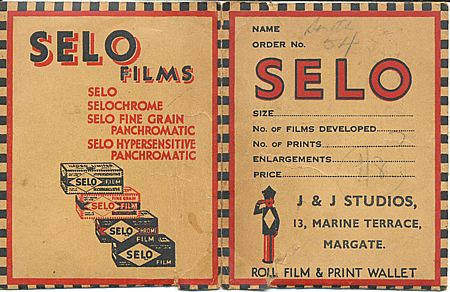 |
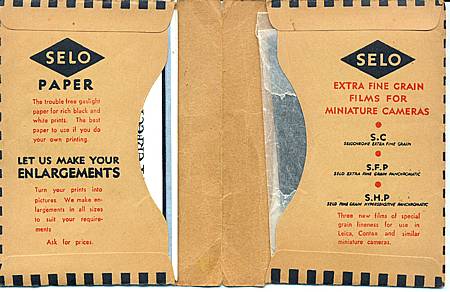 |
|
| My thanks to Anthony
Smout for sending me the scans of the Selo Films print envelope,
above. Considering the range of Selo films advertised, its likely that the envelope dates from 1937 or thereabouts. The envelope claims "Three new films of special grain fineness for use in Leica, Contax and similar cameras." |
||
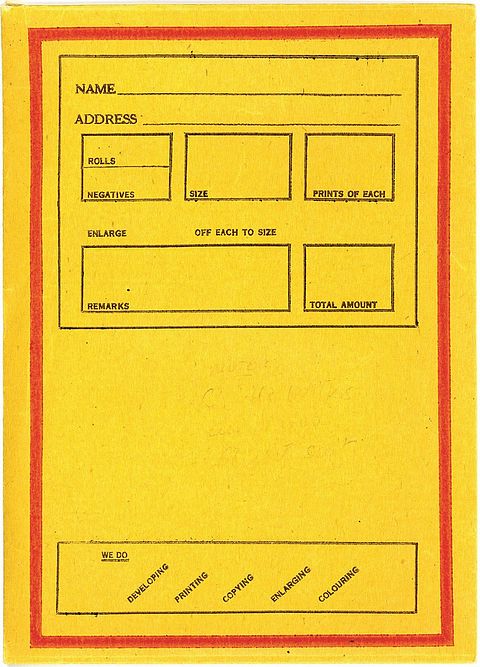 |
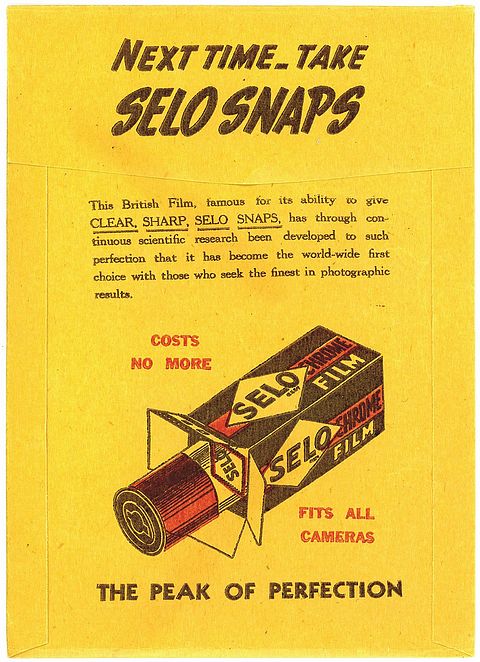 |
|
| The above print envelope was sent to me (June 2018) by Gwyneth Fatemi, whose father was in the aerial reconnaissance wing of the RAF (Canadian branch) from about 1942 to the end of the war. It contained several negatives of RAF 'planes from the war years. The envelope measures 4.5 x 6.25inches and is a true envelope with a gummed flap, not the usual design with two internal pockets, one for the negatives and one for the prints. Gwyneth tells me "Ilford film was also sold in Canada and my Dad used it a lot! I remember him mixing chemicals in his basement studio, showing us how the enlarger worked, dodging and burning prints. He was quite a ‘renaissance’ man; he played the recorder, designed and built cabinetry, and built our summer cottage when he was 68 years old!" | ||
 |
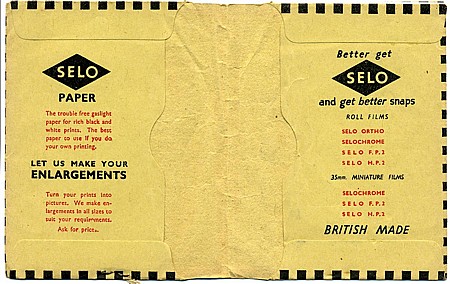 |
|
| The above print envelope images (outside and inside) have been sent to me by Nita Fenton. Since they refer to F.P.2 and H.P.2, they are likely to date from around 1940. Below are more images from Nita, possibly dating from the early 1950s. The customer for the snaps below must have worked at a local Clarks shoe shop, which was familiar enough for the person in the chemists shop taking the order, not to have to insert a name. The slogan reads "Make a letter better, Send Snaps on ILFORD films". | ||
 |
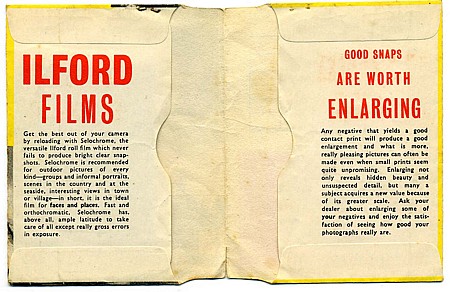 |
|
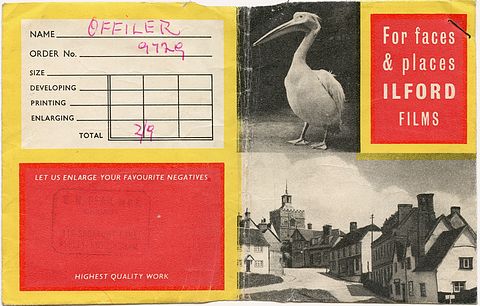 |
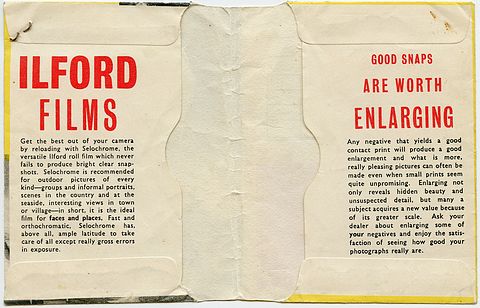 |
|
| The above print envelope (wallet) images have been sent by Robert of the website 'Past Glances'. The chemists stamp on the red panel opposite the village photograph, refers to E.R.Pear; MPS, Chemist, of 412, Broxstowe Lane, Aspley, Nottingham. Robert says "The only information I can give is that the Chemist was Edmund R Pear, born 1904. In the 1950s he was working from 215 and 557 Valley Road, and 412 Broxtowe Lane in Nottingham." | ||
 |
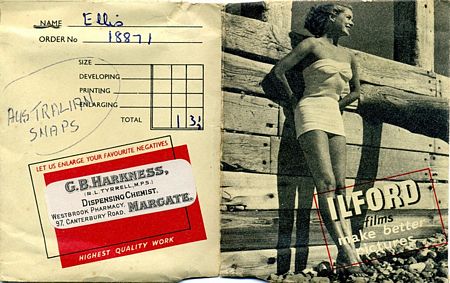 |
|
|
Christine Ellis (ex-Sussex, now living in Sydney, Australia) has sent the above views of an Ilford print envelope. As Christine points out, strangely enough it is from a Margate d&p chemist, as is the previous Selo envelope from Anthony Smout. This envelope is believed to date to about 1952 as Christine's husband's family had moved to Ramsgate in 1948 and then migrated to Australia in 1953 after her husband's father "did a recce in 1952". Hence, the hand-written capital letter notation on the back cover, reading "Australian snaps" is probably correct. The three films illustrated are Selochrome ortho, HP3 and FP3, all in 120 roll film format. |
||
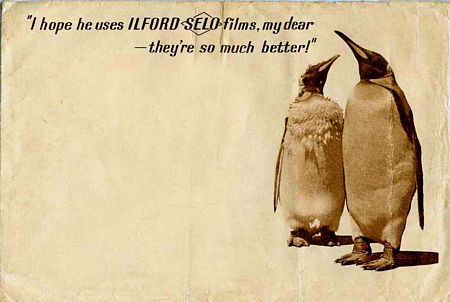 |
 Some negatives inside suggest it is from the late 1940s, post-WW2. so penguins were substituted as an amusing emblem. The reverse of the print envelope has the above slogan: "ILFORD SELO FILMS; The basis of good pictures". |
|
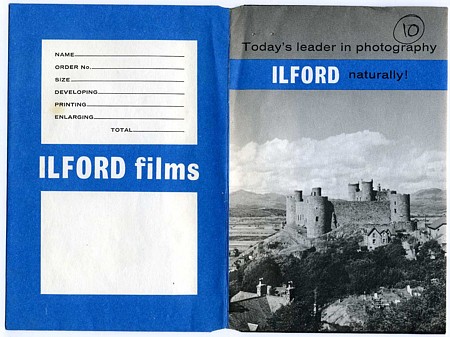 |
 |
|
|
The above print envelope images
are more provided by Nita Fenton. Since the inside cover
mentions the very fast emulsion Ilford HPS, the envelope most
likely dates to the mid or late 1950s. Interestingly, the term
'en-print' is first appearing and is explained thus: The print enevelope below looks more modern, probably belonging to the colour era of the 1960s. For more print envelopes, see: Ilford/Print_Envelope.html |
||
|
|
|
|
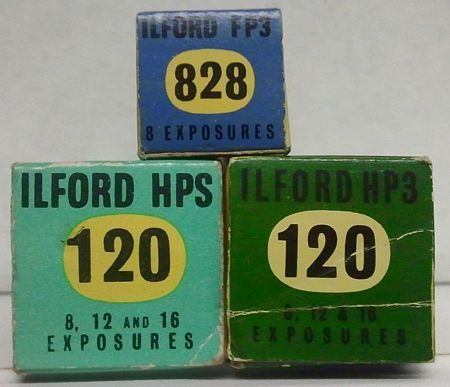 |

|
|
 Scan by courtesy of Chris B. shown on his flickr page |
 Selo poster (lithograph in colours, backed on linen, 30"x20") offered as part of a sale of ski posters at Christies, January 2007 |
|
|
|
This wonderful and well preserved enamel advertising sign (left) is owned by James Lobley. He says that he found the sign "in the loft of one of my father's chemist shops. I was probably no more than 14 years old when I came across it clearing out that roof space which had been untouched for decades. I've always been quite a strong athletic person, even as a child, so my dad always found good use for my energy and enthusiasm by giving me the tough dirty jobs nobody else wanted! It's now been in my possession for 20 years. He sold his chain almost a decade ago and it's really the only thing I have to remind me of the shops, so sentimental value is quite high". "You may add it to your site. After spending so many years hidden away under soot and cobwebs I think it deserves it" ! The age of the sign is uncertain, but likely dates to the 1930s. Selo film was being marketed by Ilford from at least September 1930 (see below) and possibly earlier. By 1935 a range of Selo films was being marketed and its possibly significant that the sign refers to the plural 'Selo Films'. Recently (March 2014) a lady named Saru has sent me a picture of a near identical sign, in apparently perfect condition. |
|
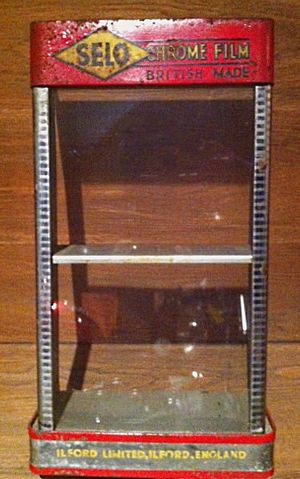 |
A glass fronted shop cabinet advertising Selochrome Film, British Made by Ilford Limited, Ilford, England. An image sent to me by Chris Eccles who lives in Canada. |
|
 |
Another Selo display cabinet, sent by a gentleman named Andrew Squibb, who (like Chris Eccles, above) also lives in Canada. It says "Buy British; SELO FILMS". At first sight it looks somewhat crudely made, maybe by the shop keeper himself. But the lettering is of good quality. |
|
|
archive: www.felixfeatures.com Frederik is a photographer
based in Oslo, Norway. He is represented by Panos Pictures (UK)
and runs the Felix Features picture agency with his partner Marianne
Alfsen. |
||
.jpg) |
A neon illuminated Selo film advertising sign. The image is by courtesy of Doug McKee. Doug says the side with the neon is actually yellow with red letters but the neon light (colour temperature) affects the result. I've tried to 'tweak' the colours in the result shown here (left), in line with Doug's description. |
|
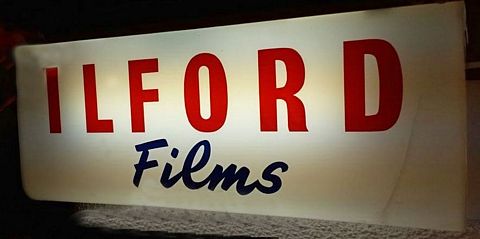 .jpg) |
This sign clearly post-dates the illuminated neon sign (above, left) advertising Ilford SC (Selochrome) Roll Film, which perhaps dates to the 1940s. This later one might date to the 1960s. Both owners intend to keep their signs and Carl thinks he'll be mounting his on the outside of his darkroom ! Carl also reports that the dimensions are 24x10x6 inches (610x255x152mm). |
|
.jpg) |
Another Ilford sign owned by Carl Garner. This one is not illuminated and would seemingly have been hung inside a chemists shop, in the area where films were purchased or left for developing and printing. Carl says it measures approximately 20inches (500mm) by 8 inches (200mm). It probably dates from the 1950s. |
|
|
On the top and bottom the livery reads 'Ilford Selochrome' The ends read 'Ilford 120 Roll Film'. The front, which is back illuminated, has 6 windows; the three to the right advertise Ilford Colour Film D, the middle panel states 'Ilford Films Fit All Cameras', the top left panel says Ilford Alpha Filter No.104 (pale yellow to give a good rendering of blue sky and clouds) and the bottom left has 'Ilford Selochrome Negative'. It's quite small, measuring just 30cm wide, 14cm high and 14cm deep, with an on/off switch on the bottom. All is in fully working condition.  |
  |
|
| Carl Garner says of the illuminated sign below: It is an Ilford Foldalight Sign. Its 3-sided with a Bakelite bulb holder and would have sat on a shelf in a shop, or could also be hung by the 4 little lugs on thre side panels. Its approximately 36 x 20 cm and has the original instructions. Made by Burnham & Co. Lower Sydenham, London SE26. This came from a photographer's shop and studio which was located on the High Street in Great Dunmow, Essex. For another Burnham & Co sign, see the one a short distance below, photographed by Heather Carey. | |
.jpg) |
.jpg) |
.jpg) Instructions read: 1. Unfold metal panel behind sign and slide projecting lugs on the vertical panels through the four slots in horizontal panel. 2. Unscrew shade ring on the lampholder and insert lampholder in the hole provided in horizontal panel. Replace ring on the inside so that the holder is held firmly in position. 3. Insert 40 or 60 watt lamp, plug in, and sign is ready for use. 4. As fitted above, the sign is suitable for standing. If required for hanging, fit the two chains provided to the lugs on the side panels nearest to frame, and the sign is then ready for hanging in any desired position. IMPORTANT If sign is damaged, please remove glass panel and any pieces of glass before returning the sign case to us. The notes at the foot of our Advice Note will assist you when returning either damaged signs or empty cases. Burnham & Co. (Onyx) Ltd. London, S.E.26 |
_cr.jpg) |
| Carl Garner says that the small glass Ilford Selochrome sign below is in an old carboard frame and measures approximately 28 x 13 cm. Its in black, red and a hammered gold (effect). There are no maker's markings; just the word 'Specialist' and Patent No. 25639C on the reverse of the frame. | |
.jpg) |
.jpg) |
| Below are some
more amazing Ilford memorabilia items purchased by Carl Garner
(May 2022). The first four images are instructional charts produced by Ilford, probably in 1960. Carl says "They all measure approximately 30 x 22 inches (760 x 865 mm), they are weighted at the top and bottom and have an incorporated 'v' hook so they can be wall hung." Interestingly, the charts are attributed to someone named D.G.Garner. Carl isn't aware of any family connection though would like to think he had some distant relative who worked for Ilford. |
|
 |
|
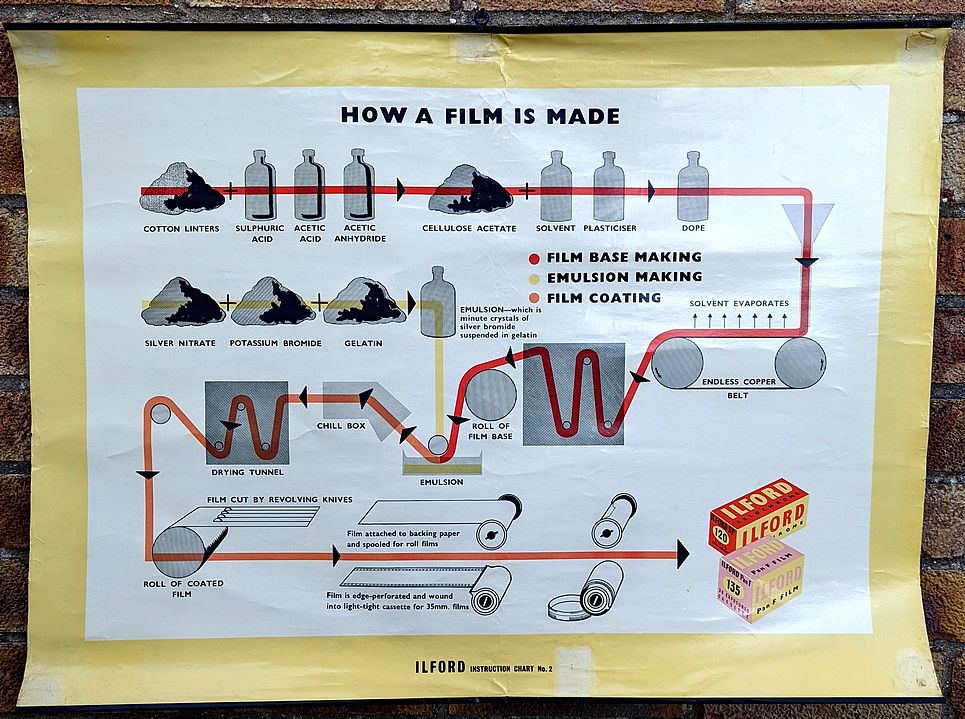 |
|
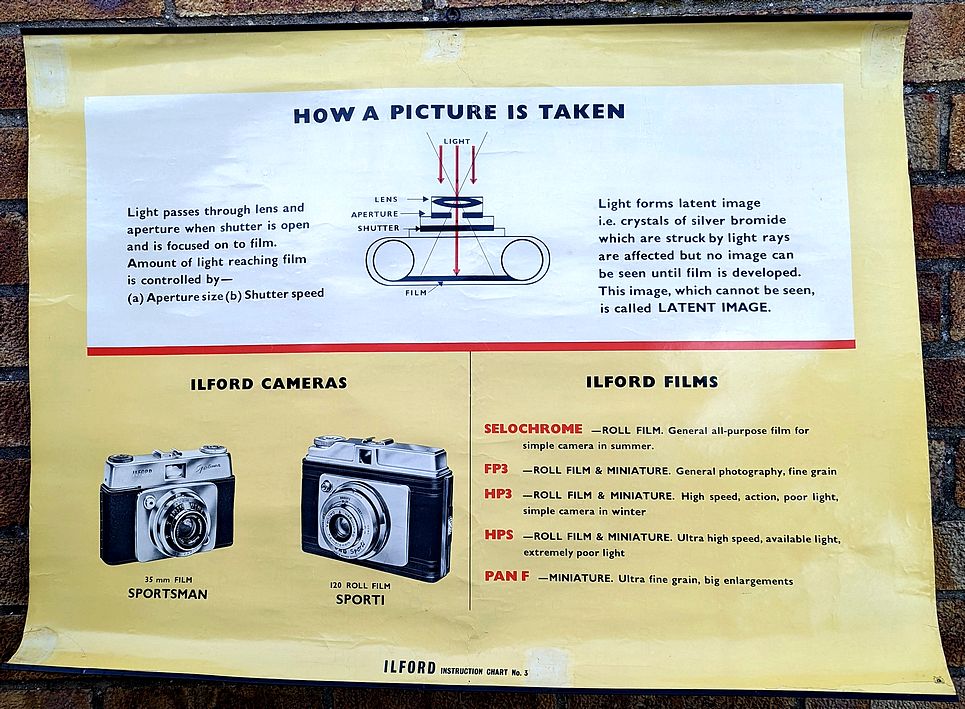 |
|
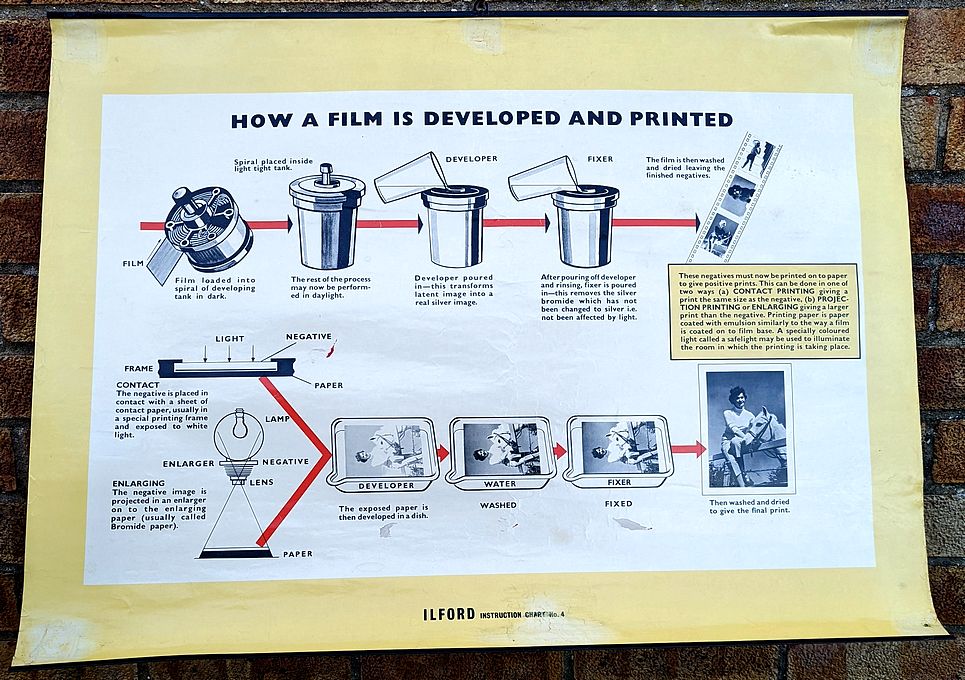 |
|
| From Carl Garner,
appropriately at this time of Queen Elizabeth II's 70th Jubilee,
an Ilford banner celebrating her father George VIth's coronation,
May 12th 1937. Carl says the banner measures measures 12 x 60 inches (305 x 1525 mm) and appears to be made of a linen type material. The previous year had been the year when the UK had 3 kings. George Vth died, Edward VIIIth abdicated and George VIth became our monarch until his death in 1952. |
|
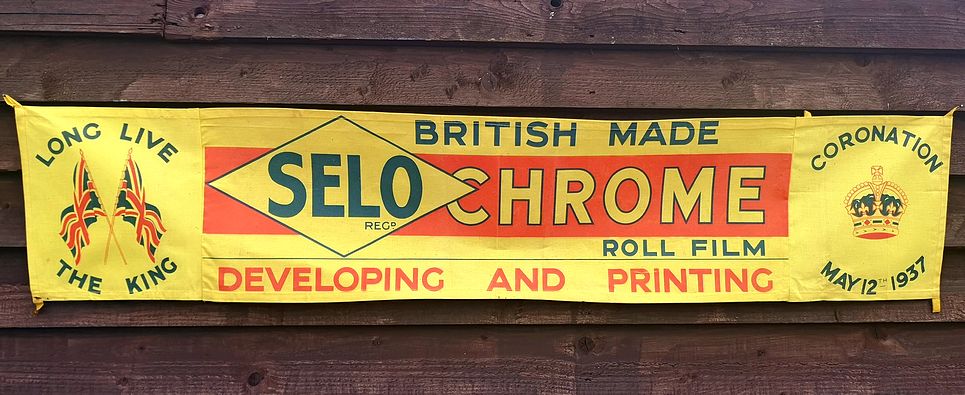 |
|
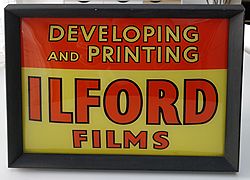 |
This sign is shown by courtesy of Heather Carey who says "It was manufactured by Burnham (Onyx) Ltd, probably in the 1950s, from aluminium & glass". |
 |
A 'grab' shot taken by Eleanor Taylor, of an Ilford Films sign, with central clock. The sign was in a shop, surounded by other bric-a-brac. The reversed Coca-Cola sign to the lower left is a projection from an overhead light and nothing to do with the Ilford sign. Similarly, the blue frame, to lower right, is just another item leaning against the Ilford sign. It maybe dates to the 1950s or 1960s. |
|
The picture below was sent
by Neil Sampson. The left hand side leaflet dates from
July 1957. The texts read: Care and Storage of Transparencies: Liability: |
|
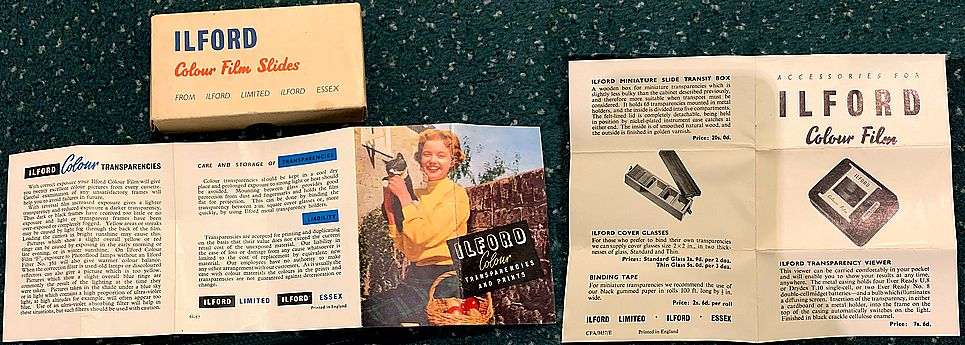 |
|
|
The right hand side dates from
August 1957. The texts read: Ilford Cover Glasses: Binding Tape: Ilford Transparency Viewer: |
|
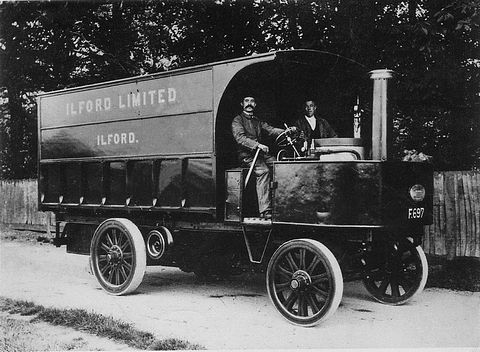 |
The picture alongside, of a lorry operated by Ilford Limited, was sent to me by John Smailes. The vehicle has the registration plate, F.697, which helps to date the vehicle. Wikipedia informs us that before 1932, the letter indicated the local authority in whose area the vehicle was registered. In 2008, the registration plate F 1 was sold by Essex County Council, who had held the plate since it was first issued in 1904, when the County became a licensing authority. This conveniently fits with Ilford's ownership of F 697, since Ilford (the town and original base of Ilford Limited) is in the County of Essex, UK. According to the Essex Record Office, F 697 was registered between 1904 and 1906. The lorry is steam driven; the two men would have been the driver and the fireman. In front of them is the boiler with what appears to be a steam pressure gauge in front of the smoke stack. Doug McKee has noticed this (but not quite the same) picture appears in the book 'Silver by the Ton' (see the top of my Ilford Chronology web page), where it is said to be the earliest vehicle used by the Company, but is identified as a Foden steam wagon. David Parfitt has e-mailed (Feb 2021) to say "It’s definitely a Thornycroft". He especially identifies it by the oval maker’s plate on the front. He says "Foden never made a steam wagon that looked anything like this". |
| Film Name Derivations: | |
|
Of course, 'Selo' means (postal) stamp in Portugese. Could this be of any significance ? The picture alongside is of a postage stamp dispenser, outside the main Post Office in Lagos, Algarve, Portugal. |
|
| The word 'Selo'
features throughout much of Ilford's history, between the 1930
to 1968. The 'Selo' company, initially formed to serve a consortium of several UK photographic companies, was situated in Woodman Road, Warley, Brentwood, Essex. Although the name 'Selo' was officially dropped from this factory's name (by Ilford) in 1946, this Brentwood factory continued to be known as 'The Selo Factory' until it was sold and the site subsequently levelled in the early 1980s For some early photographs relating to this factory, see http://www.photomemorabilia.co.uk/Ilford/Selo_Factory.html The same factory, as pictured in 1973, can be seen at http://www.photomemorabilia.co.uk/Ilford/Brentwood_(née Selo) Factory.html Ilford's Ramsden Research Laboratory, which opened in 1957, can be see here, together with photographs of some of the technical staff in 1964 http://www.photomemorabilia.co.uk/Ilford/Ramsden_Laboratory.html The above also shows views inside the new office building at the Selo (Brentwood) site. A 1930s Selo advert can be seen here http://www.photomemorabilia.co.uk/Ilford/Selo_6.htm A 1934 Selochrome film advert can be seen here http://www.photomemorabilia.co.uk/Ilford/1934_Ad.html Some early printing papers, including Selo Gaslight, can be seen here http://www.photomemorabilia.co.uk/Ilford/Ilford_Printing_Papers.html An interesting 'Selo Girl' picture, probably from the 1930's, reminiscent of the famous Kodak Girl advertisement, can be seen here http://www.photomemorabilia.co.uk/Ilford/Ilford/Selo_Girl.html |
|
|
'FP' was originally an abbreviation for Fine (grain) Panchromatic (film) and 'HP' for Hypersensitive Panchromatic (film). Hence, strictly grammatically, these film names should be abbreviated to F.P. and H.P., as in the film carton of H.P.2 shown immediately below. As this film carton is dated September 1942, it must be from some of the last batches of H.P.2 film produced (carton images from Charlie Kamerman). Interestingly, this 127 size roll film carton was original intended for Selo Ortho(chromatic) Film and has a sticker relabelling the carton as Hypersensitive Panchromatic film. In Amateur Photographer magazine for November 1946 there is an Ilford advertisement which refers to Ilford Selo H.P.3 (note the full stops after the H and P, confirming the intention of name abbreviations). By the 29th October 1947 edition, the word Selo has been dropped, but the film is still H.P.3. Then, in a January 1951 AP, the advertisement is for HP3 (no full stops), i.e Ilford have decided to make HP3 a name, not an abbreviation. To view some early ILFORD
plate (and process plate) packaging, click here. ILFORD Photo's own chronology can be viewed here. |
|
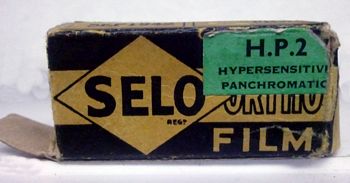 |
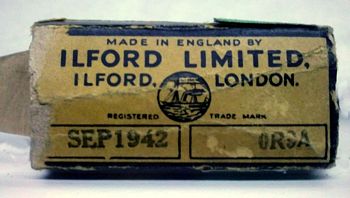 |
 The strip was sent to me by Guy Burns. Notice the edge marking which identify the film (ILFORD HP3 Hypersensitive Panchromatic) and also the frame numbering, where the 'A' numbers refer to the film's possible use in a 35mm half-frame camera. Each negative frame is a nominal 24mm wide x 36mm long, while the film itself is 35mm wide. |
|
| Film Speed Changes: | |
|
At several points in the chronology (below) reference is made to black & white film speeds changing (doubling) in 1960. This arose when American Standard PH2.5-1960 made a change to the previous American Standards Association (ASA) method of speed rating black & white film emulsions by removing an exposure safety factor that had previously been applied. The result was an apparent doubling of film speeds. With the greater use, by 1960, of colour films that needed accurate exposure measurement, and therefore greater use of accurate exposure metering systems, the ASA decided there was no longer need for black & white emulsions to retain their previous exposure safety margin. This link gives access to a short article entitled "The Jump in Film Speeds", by Andrew Matheson. It is extracted from 'PhotoGuide Magazine', Vol.11, No.8, August 1960, pages 662-665. The American (ASA) speed change, leading to a doubling of black & white film speeds (no change to the actual emulsions) was anticipated would eventually apply in the UK also, and indeed new, increased, film speeds appeared on film packaging during 1960, leading to confusion for some amateurs. One such amateur, Mr Geoffrey Perry, requested clarification about the apparent doubling of black & white film speeds in the 'Readers Write ~ Mailbag' within the December 1960 issue of "35mm and Sub-Miniature Photography" magazine. The magazine enquired of Ilford Ltd, who gave a Technical Services Note reply, which can be read here. However, the new British Standard that would formally ratify this doubling of film speed was said to still be "expected almost daily" in Amateur Photographer magazine's editorial paragraphs (page 943) as late as 21st June 1961. In fact, AP may have had to wait longer than they anticipated, since the relevant BS 1380 didn't finally arrive until 1963. Flash exposures were advised to best still be based on the lower (old) film speed rating (ref: Amateur Photographer 'Readers Ask', 11th Jan.1961). Also, the change did NOT apply to colour films, neither negative nor transparency (reversal) films, where no exposure safety margin had ever been incorporated into their speed rating. Colour film always give best results when exposed accurately to the true emulsion speed. |
|
| A
list of many Ilford plates, flat film and roll film can be found
in the book 'Silver by the Ton - A History of Ilford Limited
1879-1979' by RJ Hercock and GA Jones, two distinguished
Ilford employees. The publishers are McGraw-Hill Book Co (UK)
Ltd, Shoppenhangers Rd, Maidenhead, Berks, SL6 2QL; 176 pages
illustrated in black & white. The ISBN is 0-07-084525-5.
In August 1979 it was priced at £9.95 in hardback. The chronology below does not cover all the many types and packagings that were once available. |
|
 |
|
|
|
| This page last modified: 21st September 2024 (previously 4th October 2019) |

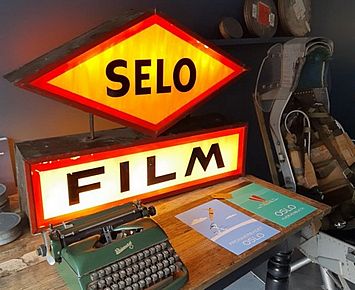
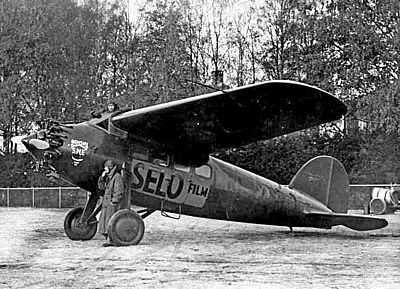 Two 1930s Selo film advertising methods,
both images sent by Fredrik Naumann in Norway. Fredrik
says the aircraft picture belongs to a friend but its known that
the 'plane flew in Norway in the 1930s.
Two 1930s Selo film advertising methods,
both images sent by Fredrik Naumann in Norway. Fredrik
says the aircraft picture belongs to a friend but its known that
the 'plane flew in Norway in the 1930s..jpg) Two more "Ilford Films" illuminated
signs, one owned by Carl Garner in the UK and the other
owned by Nicholas Hoferichter in South Africa.
Nicholas believes his came from
inside a local pharmacy.
Two more "Ilford Films" illuminated
signs, one owned by Carl Garner in the UK and the other
owned by Nicholas Hoferichter in South Africa.
Nicholas believes his came from
inside a local pharmacy..jpg)
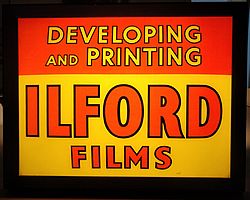 An illuminated Ilford advertising sign
for a chemist shop of, probably, the 1950s. At that time, before
High St photographic stores became commonplace, chemists shops
were the natural 'home' of anything to do with chemicals, and
this included all things photographic. The actual D&P would
almost certainly have been done off the premises, probably by
a local business providing a 'pick up and return' service to
a number of chemist shops in the area.
An illuminated Ilford advertising sign
for a chemist shop of, probably, the 1950s. At that time, before
High St photographic stores became commonplace, chemists shops
were the natural 'home' of anything to do with chemicals, and
this included all things photographic. The actual D&P would
almost certainly have been done off the premises, probably by
a local business providing a 'pick up and return' service to
a number of chemist shops in the area.